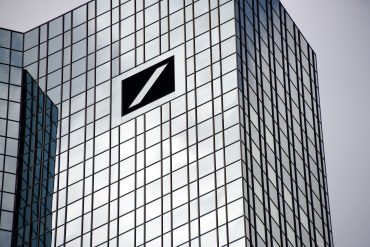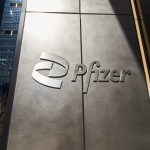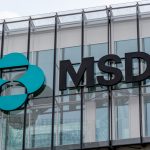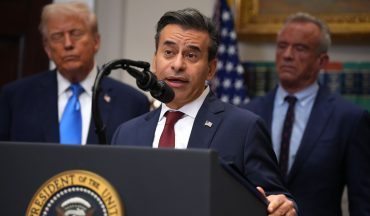
- European Stocks
- Pharmaceuticals
- Trade Policy
Deutsche Bank Upgrades European Pharma After US Tariff Deal
5 minute read

European pharmaceutical stocks gain stability as US-EU trade deal establishes 15% tariff ceiling for critical medicine exports
Key Takeaways
- Deutsche Bank upgrades European pharma sector to “overweight” following EU-US agreement limiting tariffs on pharmaceuticals to 15 percent, ending uncertainty for the region’s largest export sector to America.
- US-EU trade deal caps tariffs at 15% on most imports while eliminating EU tariffs on all US industrial goods, with potential automotive sector relief expected within weeks.
- European pharma stocks trade at 13% discount to 10-year average with predicted 7% earnings growth in 2025, contrasting with flat growth expectations for the broader STOXX 600 index.
Introduction
Deutsche Bank has raised its forecast for the European pharmaceuticals sector to “overweight” from “underweight” following breakthrough tariff relief measures announced in a joint US-EU statement. The upgrade reflects a dramatic shift in trade policy that directly benefits Europe’s largest export sector to the United States.
The German investment bank’s double upgrade signals renewed confidence in European drugmakers after months of uncertainty over potential trade barriers. This development carries significant implications for pharmaceutical companies that have underperformed broader European markets by 14 percent this year.
Key Developments
The United States has committed to limiting tariffs on European pharmaceuticals to 15 percent under the new agreement. Generic medicines and their active ingredients will face only Most Favored Nation tariff rates starting September 1.
Under the broader trade framework, the US will impose a 15% tariff on most EU imports, including pharmaceuticals, semiconductors, and automotive products. In exchange, the EU will eliminate tariffs on all US industrial goods following the agreement between President Donald Trump and European Commission President Ursula von der Leyen.
The deal extends beyond pharmaceuticals, with the EU pledging to procure $750 billion in US liquefied natural gas, oil, and nuclear energy products. Additionally, according to NBC, the agreement includes $40 billion in US-made artificial intelligence chips.

Market Impact
Deutsche Bank analysts describe the tariff clarity as a potential “buy trigger” for investors who had avoided the sector due to trade uncertainty. The pharmaceutical sector’s 14% underperformance against the STOXX 600 this year positions it for potential recovery.
Current valuations show European pharma stocks trading at a 13% discount to their 10-year average. This contrasts sharply with earnings growth projections of 7% for 2025, while the broader STOXX 600 index faces flat growth expectations.
Consensus earnings forecasts for healthcare stocks have already declined 7% this year, which Deutsche Bank believes adequately reflects previous tariff risks. The bank has raised target prices for several companies including Argenx, Sandoz, and CureVac.
Strategic Insights
The tariff relief addresses a critical concern for European pharmaceutical companies, which represent the continent’s largest export sector to America by value. The 15% cap provides regulatory certainty that enables long-term strategic planning and investment decisions.
Growth opportunities emerge in MedTech, GLP-1 drugs for diabetes and obesity treatment, biotechnology, and infertility treatments. These segments rely heavily on cross-border supply chains and benefit directly from reduced trade barriers.
However, broader pricing pressures from US regulators aligning drug prices with international benchmarks pose ongoing margin risks for companies like Bayer and Roche. American firms including Pfizer and Merck may capitalize on these regulatory shifts.
Expert Opinions and Data
Deutsche Bank analysts emphasize the sector’s structural advantages, noting that healthcare represents the second-largest segment by market capitalization in global indices after information technology. The convergence of these sectors through digital health solutions and medical devices creates additional growth potential.
The bank maintains cautious positioning on some companies due to ongoing political risks from US tariff policy. Swiss pharmaceutical companies remain excluded from the current agreement, though analysts view the EU-US announcement as progress toward broader coverage.
Industry experts highlight that tariff relief could accelerate investment in research and development, acquisitions, and international expansion. This particularly benefits areas where technology and pharmaceuticals intersect, including AI diagnostics and personalized medicine platforms.
Conclusion
The Deutsche Bank upgrade reflects fundamental changes in transatlantic trade relationships that remove significant barriers for European pharmaceutical companies. The 15% tariff cap provides operational clarity while current discount valuations offer attractive entry points for investors.
The agreement’s broader implications extend across multiple sectors, with automotive relief potentially following within weeks and substantial energy commitments reshaping economic relationships. European pharmaceutical companies now operate with greater certainty in their largest export market, positioning the sector for renewed growth and investment.








